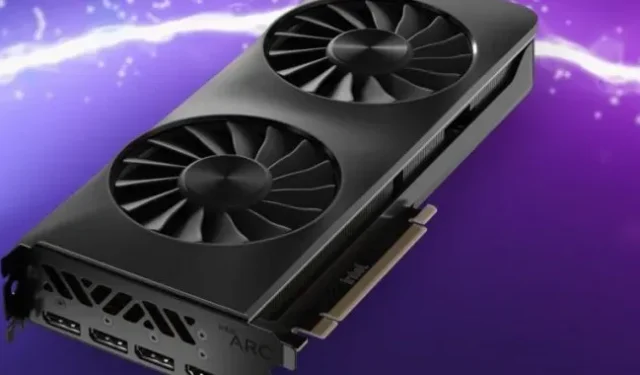High idle power consumption on Intel Arc GPUs requires BIOS settings to be changed.

The Intel Arc A750 and A770 GPUs were finally released earlier this month after years of teasing, announcements and delays, and the end result is a pair of GPUs that generally offer decent performance for the price. But Intel’s first true gaming-focused dedicated GPU architecture also had a lot of first-gen judder, including driver crashes and performance issues in games that don’t use modern DirectX 12 or Vulkan graphics APIs.
Another early issue could be idle power consumption – the amount of power these GPUs consume when they’re not actively in use or when they’re just rendering your desktop. Intel posted a troubleshooting article late last week, acknowledging that Arc desktop GPUs can suffer from “high idle power consumption”along with steps to fix the issue.
Users will need to go into their PC’s BIOS and configure a couple of advanced PCI Express power management options – the “Native ASPM”(or Active State Power Management) setting must be enabled, and the “PCI Express Root Port ASPM”setting must be enabled and set to “Substates L1”. You also need to set the “PCI Express Link State Power Management”to “Maximum Power Savings”in the advanced settings of Windows Power Options.
Intel acknowledges that settings can be found in different places in different BIOSes and that they may be named differently.
Testing from Tom’s Hardware shows that with settings enabled, the Arc A750’s standby power consumption dropped from 37.3W to 15.5W, which is a significant drop. The same settings appear to have had no effect on the Arc A770 card, though it’s not clear if this is a motherboard bug, GPU hardware, firmware or driver, or something else.
Intel may be able to fix the issue in the long run with driver or firmware updates for Arc A-series GPUs, but the troubleshooting article doesn’t make that very likely. Intel says the company will “consider optimizing in future generations”, which makes it sound like we’ll need new hardware to tackle this problem decisively.
This is not the first BIOS-related change that Intel is asking Arc users. Card performance is also greatly reduced when the Resizable BAR (or ReBAR, or Smart Access Memory, or SAM) feature is disabled in the BIOS. Nvidia and AMD cards can also benefit when Resizable BAR is enabled – it allows your CPU to access your GPU’s memory all at once rather than in chunks of 256MB – but the impact on performance is much less anyway.
What the idle power fix and BAR resizing issues have in common is that not all BIOSes provide access to these settings, especially if you’re using an older PC or a pre-built desktop from a PC manufacturer rather than a modern one. independent. gaming PC motherboard for enthusiasts. It’s unlikely to be a deterrent for Arc buyers, but it’s another caveat for a GPU lineup that already has plenty of them.
Leave a Reply